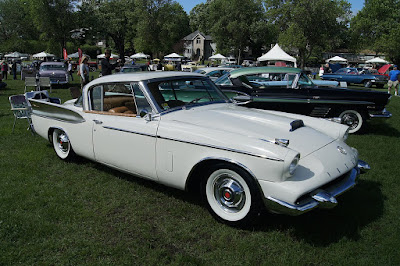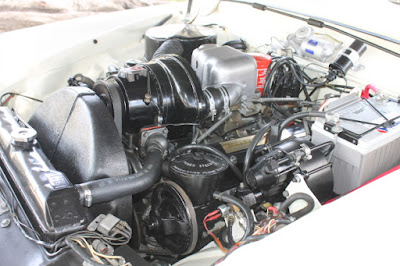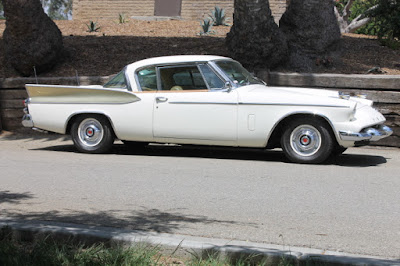Unique ONES The world's automotive enthusiasts, especially for those who like two-wheeled vehicles, aka motorbikes, are sure to know this Italian brand called Bimota. This is a brand owned by Bimota S.A. one of the premium motorcycle manufacturers headquartered in Rimini, Italy. This company founded by Massimo Tamburini, Giuseppe Morri, and Valerio Bianchi in 1973.
 |
| Bimota Tesi H2 built based on the Kawasaki Ninja H2 superbike, but still maintains the Bimota's steering-hub center system which is integrated with steering and suspension functions. (Picture from: http://bit.ly/3rUCiHO) |
During its journey, this company had ups and downs in its business activities before finally being declared bankrupt in 2017. However, it able to bounce back after Kawasaki acquired it with a share purchase of 49.9 percent in October 2019, and then changed the name to Bimota S.p.A.
In the past, if this Italian manufacturer wants to build the motorbikes always using machines from other manufacturers, ranging from Honda to Ducati. And now, in just a matter of weeks since the acquisition process ended, the joint venture is moving fast by showing its latest innovation called the Bimota Tesi H2, it's a new high-tech motorcycle in collaboration between both the Italian-Japs companies.
 |
| Bimota Tesi H2 had debuted at the 2019 EICMA in Milan and sold since June 2020 at a price tag of €64,000 (approx Rp.1.1 billion). (Picture from: https://bit.ly/35dDigu) |
The Bimota Tesi H2 built based on the Kawasaki Ninja H2 superbike, but still maintains the Bimota's styles. At a glance, the motorcycle body has a similar appearance to the Kawasaki H2 superbike with the sharp lines were drawn all over his body and visually, the most striking ones namely the use of wide winglets on both sides of its fairing.
And behind its aggressive appearance, there are analog and digital patterned instrument panels. The analog part is on the left side with a manually needle pointer to find out only engine speed. The rest is presented through a series of digital meter panels to display information such as speed, fuel, oil or a guide to adjusting the suspension.
 |
| Bimota Tesi H2 uses a 998 cc, DOHC, supercharged, 4 cylinder, liquid-cooled engine and is claimed to be capable of spraying power up to 231 hp at 11,500 rpm, or 242 hp at 11,500 rpm when coupled with Ram Air, and a maximum torque of 141 Nm at 11,000 rpm. (Picture from: http://bit.ly/2XaO0zH) |
Furthermore, the motorcycle has almost the same dimensions as the Kawasaki H2 supercharged motorcycle with the length of 2,074 mm, 770 mm width and 1,155 mm height. Then it has a wheelbase reaches 1,455 mm, ground clearance 140 mm and seat height 840 mm.
The Bimota Tesi H2 itself has a dry weight of 207 kg or lighter than the Kawasaki Ninja H2, due to the Bimota sport motorcycle uses carbon fiber in the subframe. Meanwhile, the mainframe and swingarm use lightweight aluminum. This Bimota-built sports motorcycle was first exhibited at the 2019 EICMA event in Milan, Italy. At that time, the appearance of the advanced motorcycle had made those event visitors amazed.
 |
| Bimota Tesi H2 has a dry weight of 207 kg or lighter than the Kawasaki Ninja H2, due to the Bimota sport motorcycle uses carbon fiber in the subframe, while the mainframe and swingarm use lightweight aluminum. (Picture from: http://bit.ly/3rUCiHO) |
How could be, the Bimota latest motorcycle displays various features with unique specifications, such an unusual front suspension called a steering-hub center system which is integrated with steering and suspension functions similar to those of the 1990s Bimota Tesi bikes. Besides that, a motorcycle Also equipped with an electronic damper, as well as a preload setting on the back.
Meanwhile, the rear swingarm is the same as motorbikes in general, but with a stronger foundation, due to the combination of Ohlins-made double subtank. Even though it looks solid, those configurations are claimed to have an advantage when there is hard braking and also makes the motorbike more agile.
 |
| Bimota Tesi H2 is a motorcycle legally used on the road, due to everything needed to homologate for the public road use has been pinned on it, such as turn signals, rearview mirrors, and exhaust emissions. (Picture from: http://bit.ly/3oijkbD) |
Then for the drivetrain, this Italian manufacturer clearly reveals the mechanical heart of its latest motorcycle, which is a 998 cc, DOHC, supercharged, 4 cylinder, liquid-cooled engine. As for the bore and stroke sizes are the same as the Kawasaki H2, namely 76 x 55 mm, but the compression ratio is similar to the H2R ie 8.5 : 1.
The machine mentioned above is claimed to be capable of spraying power up to 231 hp at 11,500 rpm, or 242 hp at 11,500 rpm when coupled with Ram Air, and a maximum torque of 141 Nm at 11,000 rpm. Unlike the Kawasaki H2R which is not able to use on the public road, the Bimota Tesi H2 is the opposite, because everything needed to homologate for the public road use has been pinned on it, such as turn signals, rearview mirrors, and exhaust emissions.
And finally, after going through a year-long production period and being built in a limited number of only 250 units, finally the motorbike that was touted as the twin of the Kawasaki H2 began to be distributed to its enthusiasts since October 2020 at a price tag of €64,000 (approx Rp.1.1 billion). Wow....
Kept
spur your adrenaline on the power of the two-wheeled monster and stay
alive with true safety riding. May God will forgive Your sins and so
does the cops...... *** [EKA | FROM VARIOUS SOURCES | BIKEEXIF ]
Note: This blog can be accessed via your smart phone.

































